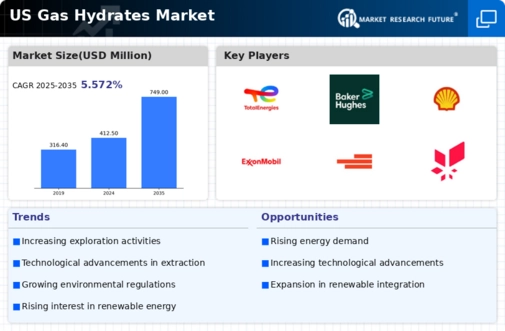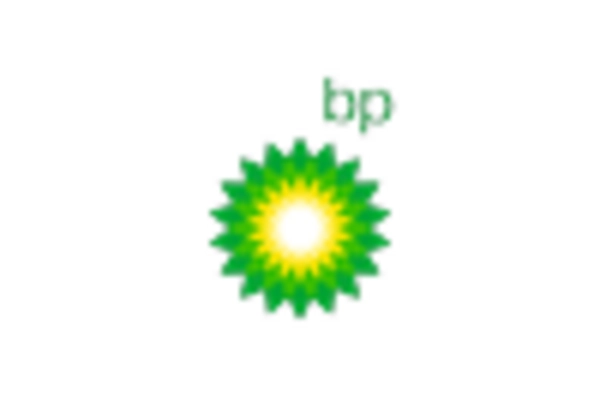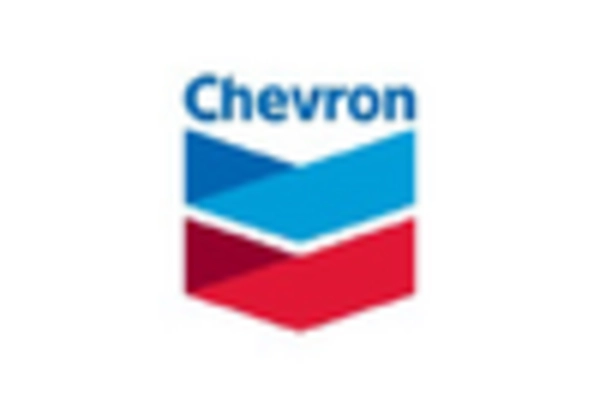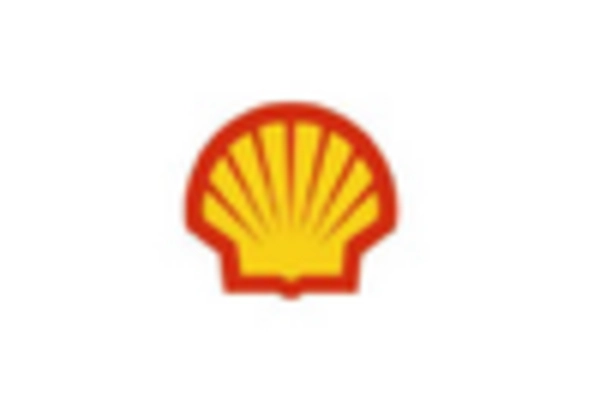Rising Energy Demand
The increasing energy demand in the United States is a primary driver for the gas hydrates market. As the population grows and industrial activities expand, the need for reliable energy sources intensifies. Gas hydrates, with their potential to provide vast amounts of natural gas, are being explored as a viable solution. Recent estimates suggest that the U.S. holds significant reserves of gas hydrates, potentially exceeding 100 trillion cubic feet of natural gas. This growing interest in gas hydrates is likely to stimulate investments in research and development, enhancing extraction technologies and methodologies. Consequently, the gas hydrates market is poised for growth as stakeholders seek to tap into these underutilized resources to meet the rising energy demands.
Environmental Regulations and Compliance
The evolving landscape of environmental regulations is influencing the gas hydrates market. As the U.S. government implements stricter environmental standards, companies involved in gas hydrate extraction must adapt to comply with these regulations. This compliance may necessitate investments in cleaner extraction technologies and practices, which could initially increase operational costs. However, the long-term benefits of adhering to environmental regulations may enhance the market's sustainability and public perception. Consequently, the gas hydrates market is likely to experience a shift towards more environmentally responsible practices, potentially attracting investment from stakeholders prioritizing sustainability.
Geopolitical Factors and Energy Security
Geopolitical dynamics play a crucial role in shaping the gas hydrates market. The U.S. government is increasingly focused on energy security, particularly in light of fluctuating global oil prices and geopolitical tensions. Gas hydrates present an opportunity for the U.S. to reduce its dependence on foreign energy sources. By developing domestic gas hydrate resources, the country can enhance its energy independence and stabilize its energy supply. This strategic focus on energy security is likely to drive investments in the gas hydrates market, as stakeholders recognize the potential for these resources to contribute to a more resilient energy landscape.
Technological Innovations in Exploration
Technological advancements in exploration techniques are significantly influencing the gas hydrates market. Innovations such as advanced seismic imaging and remote sensing technologies are enabling more accurate assessments of gas hydrate deposits. These technologies facilitate the identification of potential extraction sites, thereby reducing exploration costs and risks. Furthermore, the development of specialized drilling equipment tailored for gas hydrate extraction is enhancing operational efficiency. As a result, the gas hydrates market is likely to witness increased activity, with companies investing in cutting-edge technologies to optimize resource recovery. The integration of these innovations could potentially lead to a more sustainable and economically viable gas hydrates market.
Investment in Renewable Energy Transition
The ongoing transition towards renewable energy sources is indirectly driving the gas hydrates market. As the U.S. seeks to diversify its energy portfolio, natural gas, including that derived from gas hydrates, is viewed as a bridge fuel. This transition is supported by federal and state policies aimed at reducing carbon emissions. The gas hydrates market is likely to benefit from increased investments in infrastructure that supports natural gas utilization, such as pipelines and processing facilities. Moreover, the potential for gas hydrates to complement renewable energy sources could enhance their attractiveness in the energy mix, thereby fostering growth in the gas hydrates market.

















Leave a Comment